Safety hazards exist in every workplace, but how do you know which ones have the most potential to harm workers? By identifying hazards at your workplace, you will be better prepared to control or eliminate them and prevent accidents, injuries, property damage, and downtime.
In a safety hazard assessment, it is important to be as thorough as possible because after all, you can’t protect your workers against hazards you are unaware of and unprepared for. Avoid blind spots in your workplace safety procedures by taking into consideration these six main categories of workplace hazards.
1. Safety Hazards:
Safety hazards are unsafe working conditions that that can cause injury, illness, and death. Safety hazards are the most common workplace risks.
THEY INCLUDE:
- Anything that can cause spills or trips such as cords running across the floor or ice
- Anything that can cause falls such as working from heights, including ladders, scaffolds, roofs, or any elevated work area.
- Unguarded and moving machinery parts that a worker can accidentally touch.
- Electrical hazards like frayed cords, missing ground pins,and improper wiring
- Confined spaces.
2. Biological Hazards:
Biological hazards include exposure to harm or disease from working with animals, people, or infectious plant materials. Workplaces with these kinds of safety hazards include, but are not limited to, work in schools, day care facilities, colleges and universities, hospitals, laboratories, emergency response, nursing homes, or various outdoor occupations.
TYPES OF THINGS YOU MAY BE EXPOSED TO INCLUDE:
- Blood and other body fluids
- Fungi/mold
- Bacteria and viruses
- Plants
- Insect bites
- Animal and bird droppings
3. Physical Hazards:
Physical hazards can be any factors within the environment that can harm the body without necessarily touching it.
THEY INCLUDE:
- Radiation: including ionizing and non-ionizing (EMF’s, microwaves, radio waves, etc.) materials
- High exposure to sunlight/ultraviolet rays
- Temperature extremes – hot and cold
- Constant loud noise
4. Ergonomic Hazards:
Egonomic safety hazards occur when the type of work, body positions, and working conditions put a strain on your body. They are the hardest to spot since you don’t always immediately notice the strain on your body or the harm that these hazards pose. Short-term exposure may result in “sore muscles” the next day or in the days following the strain, but extended exposure can result in serious long-term issues.
ERGONOMIC HAZARDS INCLUDE:
- Improperly adjusted workstations and chairs
- Frequent lifting
- Poor posture
- Awkward movements, especially if they are repetitive
- Having to use too much force, especially if you have to do it frequently
- Excessive vibration
5. Chemical Hazards:
Chemical hazards are present when a worker is exposed to any chemical preparation in the workplace in any form (solid, liquid or gas). Some are safer than others, but to some workers who are more sensitive to chemicals, even common solutions can cause illness, skin irritation, or breathing problems.
BEWARE OF:
- Liquids like cleaning products, paints, acids, solvents – particularly if chemicals are in an unlabeled container
- Vapors and fumes that come from welding or exposure to solvents
- Gases like acetylene, propane, carbon monoxide and helium
- Flammable materials like gasoline, solvents, and explosive chemicals
- Pesticides
6. Work Organization Hazards:
Safety hazards or stressors that cause stress (short-term effects) and strain (long-term effects). These are hazards associated with workplace issues such as workload, lack of control and/or respect, etc.
EXAMPLES INCLUDE:
- Workload demands
- Workplace violence
- High intensity and/or pace
- Respect (or lack thereof)
- Flexibility
- Control or say about things
- Social support or relations
- Sexual harassment
How to prevent workplace hazards
The best way to protect yourself and your employees from workplace hazards is to identify and manage them and take reasonable steps to prevent their potential to harm.
In order to control workplace hazards and eliminate or reduce the risk, you should take the following steps:
- identify the hazard by carrying out a workplace risk assessment;
- determine how employees might be at risk;
- evaluate the risks;
- record and review hazards at least annually, or earlier if something changes.
Remember that these lists are non-exhaustive. When you are completing a workplace hazard assessment, take into account these six larger categories to think of factors that may affect your workers in their particular circumstances.


